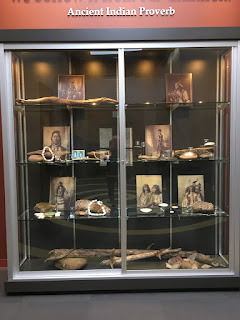Saturday, September 5, 2009
We loaded into our vehicle and followed one another to the different areas.
Our first stop was Tom Hendrix, the Wall. Located just off the Natchez Trace, this impressive rock wall has been under construction for the last 30 years by Tom Hendrix. It is dedicated to his great-great-grandmother, Te-lah-nay, who was among those taken to Oklahoma during the Trail of Tears. It took her five years to walk back to her roots in Florence, Alabama.
Charlie Two Moons, a spiritual person, told Tom that the wall belongs to all the people. You are just the keeper. Some will come and ask, Why does it bend? Why is it higher and wider in some places than others?' Tell them it is like your great great grandmother's journey and their journey through life… it is never straight."
We sat in a group while he told us the story about why and how he started building the wall.
 |
| If the Legend Fade |
 |
| Tom Hendrix is showing us a Basket. |
 |
| Walking within the walls |
 |
| Wall of faces |
We thanked Tom and began our journey to Rock Springs, where we searched for different bird species.
 |
| Tiny Jewels of the air |
 |
| Rock Spring Trail |
 |
Walking the trail
We ate lunch at Rock Springs. |
 |
| Colbert Ferry Bridge |
 |
| Fowls of the air |
When we finished here, we rode back to UNA, and Mary thanked me for the ride. We said goodbye and parted ways.






































































